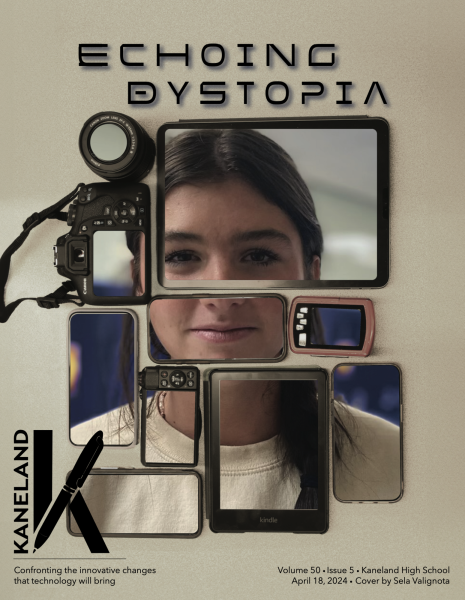Recognition for millions lost in genocide
May 21, 2014
“We saw the whole world closing their eyes and ears, leaving us alone to thugs and gangsters. The genocide took away a million people in a 100 days,” actor from “Hotel Rawanda” Paul Rusesabagina said.
Genocides can take millions of people away in a blink of an eye. It is the deliberate systematic extermination of a national, racial, political or cultural group.
Holocaust
World War II was a dark time in world history. Not only the war itself, but the struggle of people all around the world was imminent. When Adolf Hitler took control over Germany, he wanted to implement the idea of removing the so-called “undesirable” from society. This led to the massive massacre throughout Europe know today as the Holocaust.
Many believe Hitler targeted people following the Jewish religion. While this holds a great value of truth, but he also targeted Slavs, Roma, the disabled, Jehovah’s Witnesses and homosexuals, as well as political and religious dissidents.
“The guy was insane, unjustly arrogant and had an ego like a Napoleon,” junior Philip Rawers said.
In the course of 12 years, Hitler ended up establishing 20,000 camps. These camps imprisoned, tortured and eventually killed millions of people. These 20,000 camps were created for forced-labor to help supply the German army and primarily as extermination cites.
“[The mass killing] was shocking to hear what he did,” senior Alex Speckman said.
During the early parts of the Holocaust, most of the prisoners were German Communists, Socialists, Social Democrats, Roma (Gypsies), Jehovah’s Witnesses, homosexuals and persons accused of “asocial” or socially deviant behavior.
After Austria was annexed in March of 1938, the flow of German and Austrian Jews being imprisoned throughout German territories started.
Along with the annexation of Austria followed waves of violent anti-Jewish pogroms,
the German word for “to wreak havoc.” The most known pogrom in Germany was “Kristallnacht.” Kristallnacht truly means “Night of Crystal,” or “Night of Broken Glass.”
Kristallnacht was a riot that broke out in the streets of Germany. The streets were lined with glass from the windows of Jewish-owned business.
According to the United States Holocaust Memorial Museum, “In its aftermath, German officials announced that Kristallnacht had erupted as a spontaneous outburst of public sentiment in response to the assassination of Ernst vom Rath, a German embassy official stationed in Paris.”
After Kristallnacht, Nazi officers were sent out to arrest and soon imprison people of Jewish descent.
As soon as someone was arrested, they could be sent to a concentration camp where they forced to work for hours on end. Millions died of exhaustion or starvation. The other camp they would be sent to were extermination camps.
These camps killed millions of people just for the purpose of the extermination of larger groups of people all at one time.
Within the city of Chelmon was the first extermination camp. Chelmon was a death camp set up in December 1941. Within this camp were glass chambers that would be filled with poison gases to increase killing efficiency. During the height of deportation, nearly 6,000 Jewish people were gassed and killed each day.
By the spring of 1945, the Allies (United States and Britian) had pushed the Germans back on both fronts. The Germans had pushed for the use of “Final Solution” within the extermination camps. As Allied forces pushed into Germany, they liberated the Jewish people from the camps.
Today, there are museums in Washington D.C. and Chicago that are living memoirs for the Holocaust.
The United States Holocaust Memorial Museum in D.C. is a three floor museum with each level set up with a main theme.
The first floor displays how systematic mass murder could have happened, chronicles events in Germany from the rise to power of the Nazi Party in 1933 and the outbreak of World War II in September 1939.
The middle floor examines the Nazi policies toward the Jewish people, the formation of ghettos and mass murders in killing fields to gas chambers.
The final floor addressed the liberation of the Jewish people, the Allied victory over Germany and the aftermath of the Holocaust.
“It’s hard to describe how the memorial was. [I was] speechless,” Speckman said.
This year, the national day to remember the Holocaust is Monday, April 28. This is an internationally recognized holiday that corresponds with the 27 day of Nisan on the Hebrew calendar.
In Hebrew, the national day for remembrance is called Yom Hashoah. This holiday is to mark the anniversary of the Warsaw ghetto uprising.
“It [National Day of Remembrance] should be more known. It is a very pivotal point in our history and we need to learn from it and never do it again,” Rawers said.
Russia Stalin
When a death count spans across three to 60 million souls Russia’s dictator is personally responsible for one of the worst genocides the world has known.
During World War II, Joseph Stalin was the leader of Russia. At the beginning of the war, Russia and Germany signed a nonaggression pact until Hitler turned against Russia and attacked.
The hatred toward the Nazi party during World War II put a shadow over the crisis in Russia.
Stalin ruled from 1928 to 1953 after his successor, Vladimir Lenin, died in 1924. Lenin had warned the prominent members of the party that Stalin has become corrupted and should be removed before he would abuse his use of power.
During this time, Stalin killed anywhere from three to 60 million of his own people during the war. He would kill anyone who promoted democracy or idea that conflicted with his views.
The most famous massacre that Stalin was known for was the Katyn Forest Massacre. This was the execution of Polish nationals. Stalin had appointed the soviet secret police (NKVD) to carry out this massacre.
In 1940, under Stalin’s orders, the NKVD were to go the the Katyn forest and shoot and bury over 4000 service personnel that had been taken prisoner during the invasion of Poland during World War II.
In 1943, Nazi parties had dug up the bodies of the dead after taking over the Katyn forest to help alienate the USSR from the Allies during World War II. They blamed the Soviet’s for the deaths. The next year, Russia took back the Katyn forest and re-dug up the dead to blame the Nazi’s for the deaths. The world sided with the Soviets. If the U.S believed the massacre was of Russia’s doing during that time period, the war could have been altered. The U.S. would not have sided with Russia.
“Stalin used fear to keep power. His army was loyal only because of fear. If they went against him, in Stalin’s case, they would be shot,” Rowers said.
Stalin believed that everywhere he went there were enemies around the corner. He was constantly paranoid and has what some people call a “sociopathic personality disorder.”
Stalin would send state security to find anyone he considered an enemy of the state. He would then arrest , imprison and finally execute them for their “crimes.”
Armenian Genocide
“The Ottoman Empire should be cleaned up of the Armenians and the Lebanese. We have destroyed the former the sword, we shall destroy the latter through starvation,” Ottoman military officer Enver Pasha said on May 19, 1916.
In 1915, the Turkish government set a plan in motion to eliminate the Armenians that were still living in the Ottoman Empire. World War I was in it’s early years, and the Turks were a part of the Axis powers, embracing the ideology that all people “less” than them were to be eliminated. To the “Young Turks” (the group that was then in charge of the Turk empire), that included the Armenians and all Christians not sided with the Axis powers.
According to History Channel website, “The Ottoman rulers, like most of their subjects, were Muslim. They permitted religious minorities like the Armenians to maintain some autonomy, but they also subjected Armenians, who they viewed as “infidels,” to unequal and unjust treatment. Christians had to pay higher taxes than Muslims, for example, and they had very few political and legal rights.”
Over 1.5 million people were killed out of the 2.5 million total population, and thousands of Armenians were uprooted from their homes and forced to find shelter in the unforgiving wilderness of the desert and mountains around them. Hundreds of thousands eventually were taken by starvation. While this mass genocide occurred many years ago, the idea of genocide and the aftermath of every discrimination is still present in our everyday life.
“Genocide is becoming a commercial issue that has devalued a human life in the form of a racial message. In today’s society, mass killing of millions of people is what it takes to get the world’s attention on a topic, and that is absolutely devastating,” senior Lauren Zick said.
To this day in Turkey, it is considered illegal to mention what had happened to the Armenians.
According to History Channel website, “Despite pressure from Armenians and social justice advocates throughout the world, it is still illegal in Turkey to talk about what happened to Armenians during this era.”
Rwanda
Tension was running high between the minority group, the Tutsis, and the majority group, the Hutus, in Rwanda. Years before, as many as 800,000 to one million people were killed as their Civil War turned into a genocide.
According to Faculty Polytechnic Summary, “In 1988, the Rwandan Patriotic Front (RPF) was founded in Kampala, Uganda as a political and military movement with the stated aims of securing repatriation of Rwandans in exile and reforming of the Rwandan government, including political power sharing.
The RPF was composed mainly of Tutsi exiles in Uganda, many of whom had served in President Yoweri Museveni’s National Resistance Army, which had overthrown the previous Ugandan government in 1986.”
The RPF made attacks on Rwanda, labeling Tutsis as accomplices to the RPF while labeling all Hutus as traitors. On April 6, 1994, the Presidents of Burundi and Rwanda were killed in a plane crash located near the Rwandan capital of Kigali sending Rwanda into a state of chaos.
One-hundred days followed of rape and murder.
“I once spoke to someone who had survived the genocide in Rwanda, and she said to me that there was now nobody left on the face of the earth, either friend or relative, who knew who she was. No one who remembered her girlhood and her early mischief and family lore; no sibling or boon companion who could tease her about that first romance; no lover or pal with whom to reminisce. All her birthdays, exam results, illnesses, friendships, kinships—gone. She went on living, but with a tabula rasa as her diary and calendar and notebook. I think of this every time I hear of the callow ambition to ‘make a new start’ or to be ‘born again’: Do those who talk this way truly wish for the slate to be wiped? Genocide means not just mass killing, to the level of extermination, but mass obliteration to the verge of extinction,” Christopher Hitchens wrote in Hitch-22: A Memoir.
According to The Rwandan Genocide, Modern History Project 2012 website, “More than 67 percent of women who were raped during the genocide were infected with HIV and AIDS. In many cases, this resulted from a systematic and planned use of rape by HIV+ men as a weapon of genocide. During this period, more than six men, women and children were murdered every minute of every hour of every day. This efficiency of killing was maintained for more than three months.”









